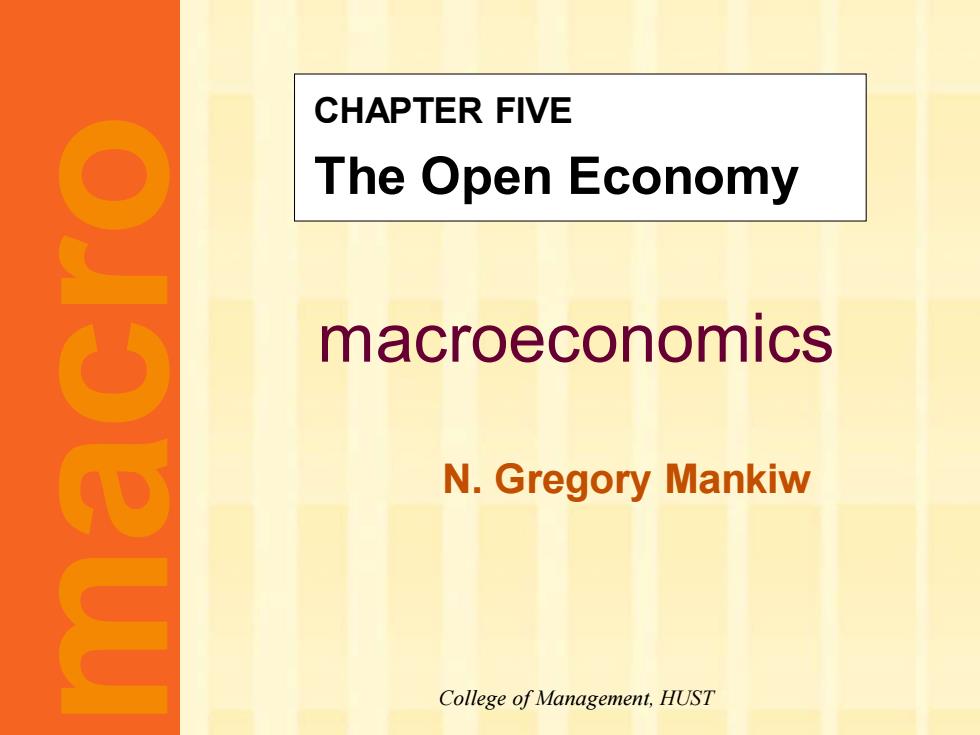
CHAPTER FIVE The Open Economy macroeconomics N.Gregory Mankiw College of Management,HUST
macroeconomics N. Gregory Mankiw macro College of Management, HUST CHAPTER FIVE The Open Economy
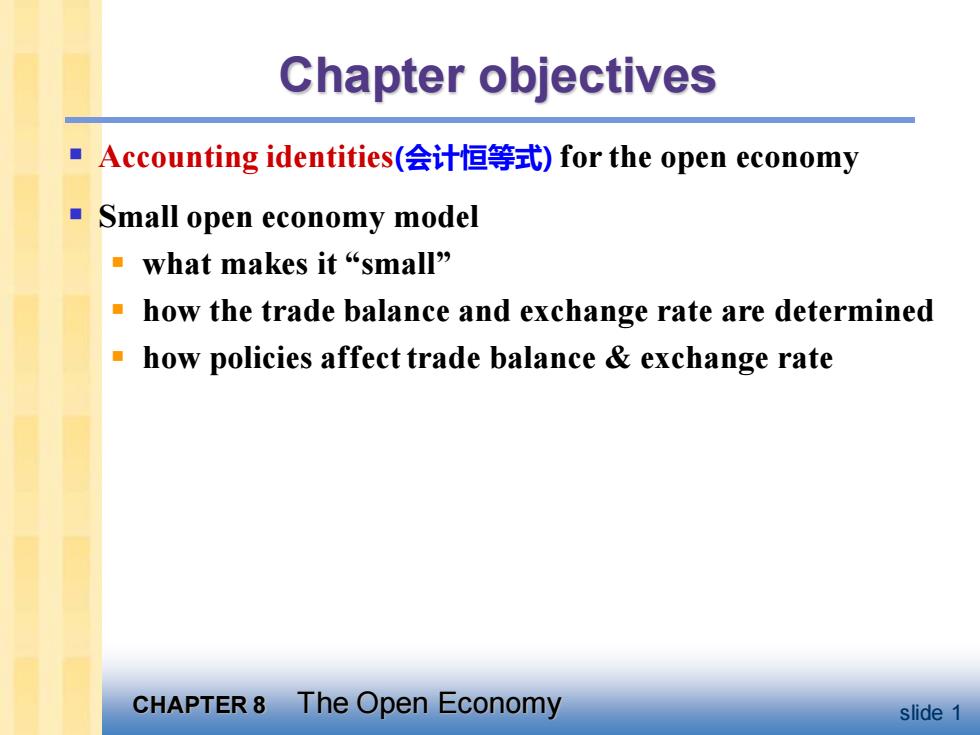
Chapter objectives Accounting identities(会计恒等式)for the open economy ■ Small open economy model ·what makes it“small'” how the trade balance and exchange rate are determined how policies affect trade balance exchange rate CHAPTER 8 The Open Economy slide 1
CHAPTER 8 The Open Economy slide 1 Chapter objectives ▪ Accounting identities(会计恒等式) for the open economy ▪ Small open economy model ▪ what makes it “small” ▪ how the trade balance and exchange rate are determined ▪ how policies affect trade balance & exchange rate
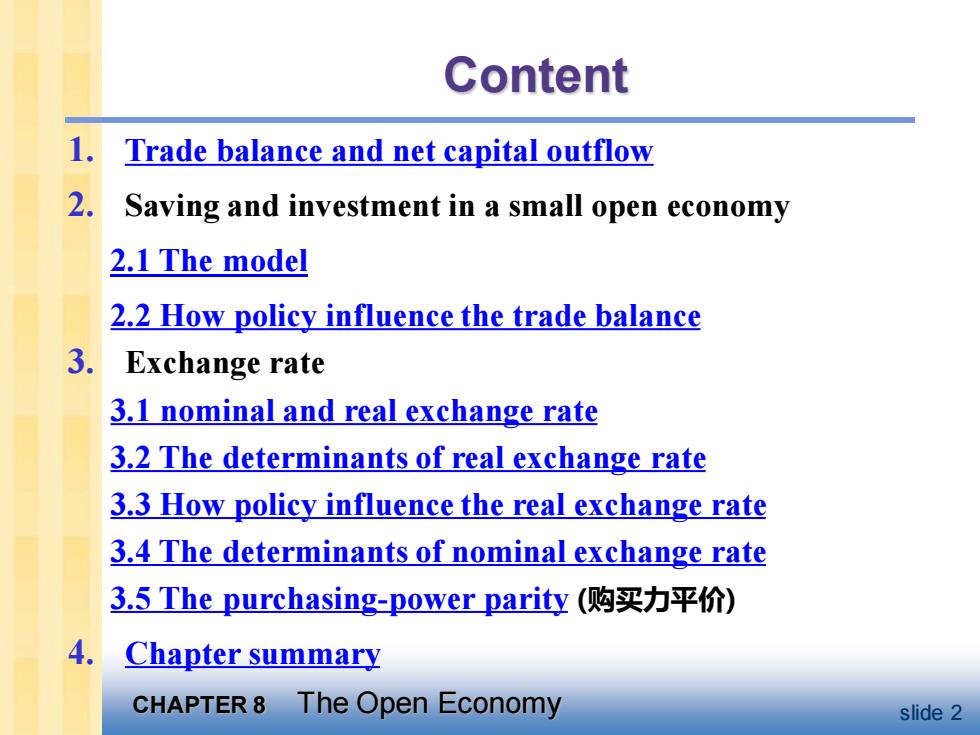
Content 1. Trade balance and net capital outflow 2. Saving and investment in a small open economy 2.1 The model 2.2 How policy influence the trade balance 3. Exchange rate 3.1 nominal and real exchange rate 3.2 The determinants of real exchange rate 3.3 How policy influence the real exchange rate 3.4 The determinants of nominal exchange rate 3.5 The purchasing-power parity(购买力平价) 4. Chapter summary CHAPTER 8 The Open Economy slide 2
CHAPTER 8 The Open Economy slide 2 Content 1. Trade balance and net capital outflow 2. Saving and investment in a small open economy 2.1 The model 2.2 How policy influence the trade balance 3. Exchange rate 3.1 nominal and real exchange rate 3.2 The determinants of real exchange rate 3.3 How policy influence the real exchange rate 3.4 The determinants of nominal exchange rate 3.5 The purchasing-power parity (购买力平价) 4. Chapter summary
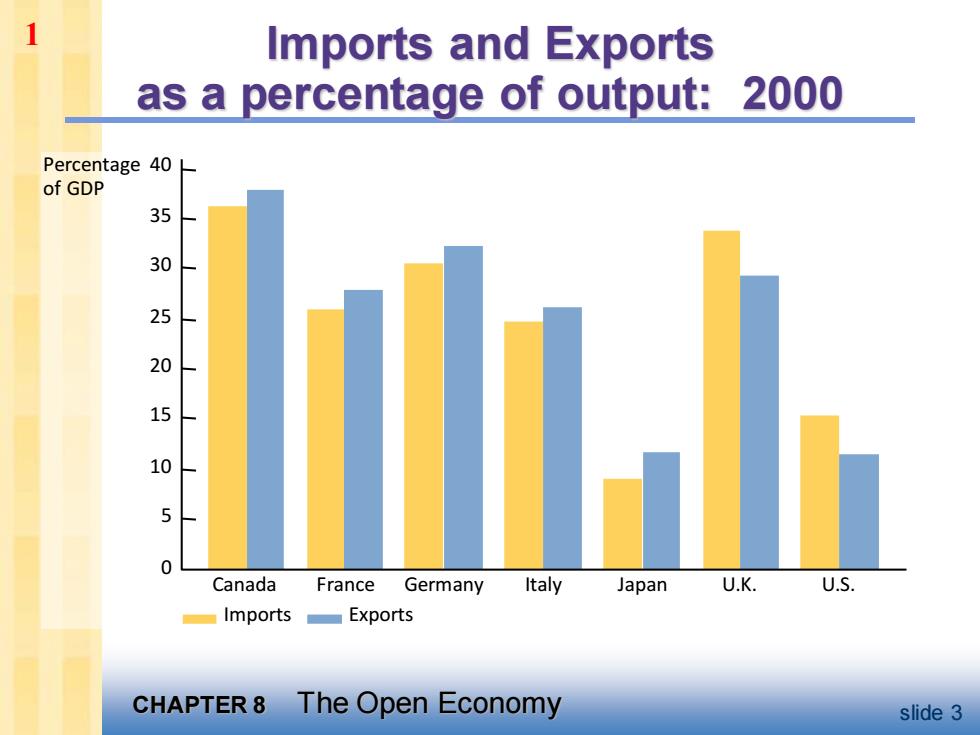
1 Imports and Exports as a percentage of output: 2000 Percentage 40 of GDP 35 30 25 20 10 5 0 Canada France Germany Italy Japan U.K. U.S. Imports Exports CHAPTER 8 The Open Economy slide 3
CHAPTER 8 The Open Economy slide 3 Percentage of GDP 40 35 30 25 20 15 10 5 0 Canada France Germany Italy Japan U.K. U.S. Imports Exports Imports and Exports as a percentage of output: 2000 1
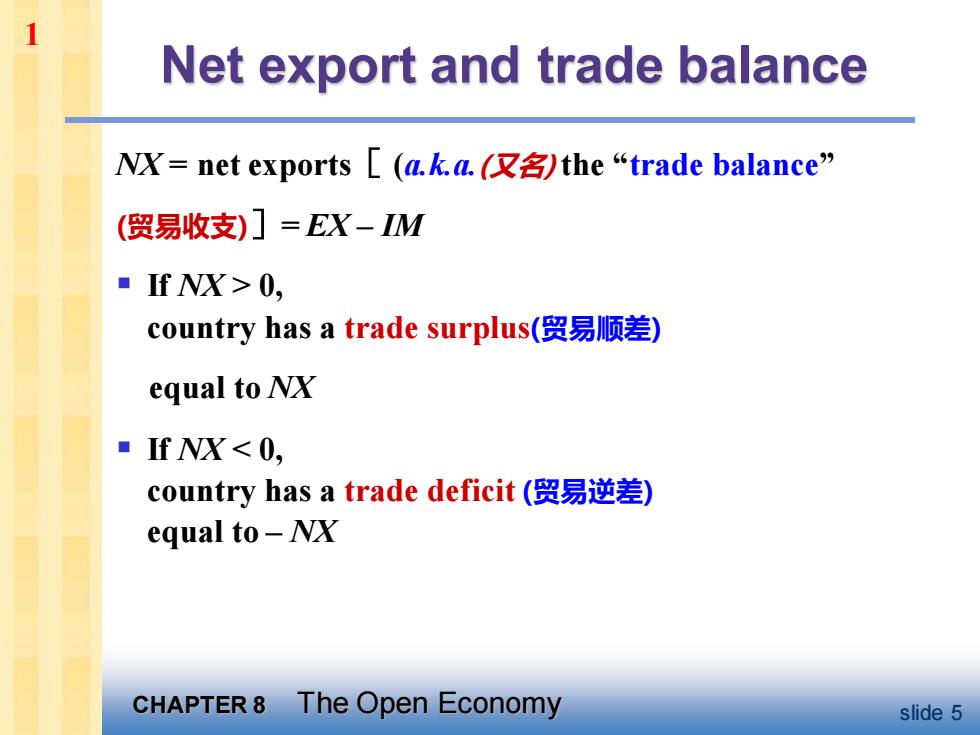
Net export and trade balance NX=net exports[(a.ka(仅)the“trade balance'” (贸易收支)]=EX-IM ■IfNX>0, country has a trade surplust(贸易顺差) equal to NX ■fNX<0, country has a trade deficit(贸易逆差) equal to-NX CHAPTER8 The Open Economy slide 5
CHAPTER 8 The Open Economy slide 5 NX = net exports[ (a.k.a.(又名) the “trade balance” (贸易收支)]= EX – IM ▪ If NX > 0, country has a trade surplus(贸易顺差) equal to NX ▪ If NX < 0, country has a trade deficit (贸易逆差) equal to – NX Net export and trade balance 1